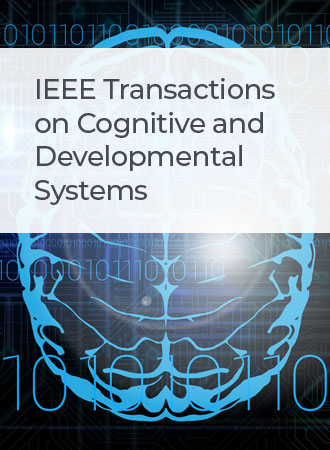利用具有可解释通道-时间注意机制的自动睡眠分期法检测抑郁症
IF 5
3区 计算机科学
Q1 COMPUTER SCIENCE, ARTIFICIAL INTELLIGENCE
IEEE Transactions on Cognitive and Developmental Systems
Pub Date : 2024-01-26
DOI:10.1109/TCDS.2024.3358022
引用次数: 0
摘要
尽管之前在抑郁检测研究方面做了很多努力,但利用睡眠结构自动检测抑郁的研究还很少,而且仍然存在一些挑战:1) 如何应用睡眠分期检测抑郁并区分容易误判的类别;以及 2) 如何自适应地捕捉注意力通道维度信息以增强睡眠分期方法的可解释性。针对这些挑战,我们提出了一种基于通道-时间注意力机制的自动睡眠分期方法和一种基于睡眠结构特征的抑郁检测方法。在睡眠分期中,采用时空注意机制更新特征矩阵,估计每个睡眠阶段的置信度分数,根据这些分数调整每个通道的权重,并通过时空卷积网络获得最终结果。在抑郁检测中,根据睡眠分期的结果提取了七个睡眠结构特征,用于单相抑郁症(UDD)患者、双相抑郁症(BD)患者和健康人之间的抑郁检测。实验证明了所提方法的有效性,而通道注意机制的可视化则说明了我们方法的可解释性。此外,这是利用睡眠结构特征自动检测 UDD 和 BD 患者的首次尝试。本文章由计算机程序翻译,如有差异,请以英文原文为准。
Depression Detection Using an Automatic Sleep Staging Method With an Interpretable Channel-Temporal Attention Mechanism
Despite previous efforts in depression detection studies, there is a scarcity of research on automatic depression detection using sleep structure, and several challenges remain: 1) how to apply sleep staging to detect depression and distinguish easily misjudged classes; and 2) how to adaptively capture attentive channel-dimensional information to enhance the interpretability of sleep staging methods. To address these challenges, an automatic sleep staging method based on a channel-temporal attention mechanism and a depression detection method based on sleep structure features are proposed. In sleep staging, a temporal attention mechanism is adopted to update the feature matrix, confidence scores are estimated for each sleep stage, the weight of each channel is adjusted based on these scores, and the final results are obtained through a temporal convolutional network. In depression detection, seven sleep structure features based on the results of sleep staging are extracted for depression detection between unipolar depressive disorder (UDD) patients, bipolar disorder (BD) patients, and healthy subjects. Experiments demonstrate the effectiveness of the proposed approaches, and the visualization of the channel attention mechanism illustrates the interpretability of our method. Additionally, this is the first attempt to employ sleep structure features to automatically detect UDD and BD in patients.
求助全文
通过发布文献求助,成功后即可免费获取论文全文。
去求助
来源期刊

IEEE Transactions on Cognitive and Developmental Systems
Computer Science-Software
CiteScore
7.20
自引率
10.00%
发文量
170
期刊介绍:
The IEEE Transactions on Cognitive and Developmental Systems (TCDS) focuses on advances in the study of development and cognition in natural (humans, animals) and artificial (robots, agents) systems. It welcomes contributions from multiple related disciplines including cognitive systems, cognitive robotics, developmental and epigenetic robotics, autonomous and evolutionary robotics, social structures, multi-agent and artificial life systems, computational neuroscience, and developmental psychology. Articles on theoretical, computational, application-oriented, and experimental studies as well as reviews in these areas are considered.
 求助内容:
求助内容: 应助结果提醒方式:
应助结果提醒方式:


